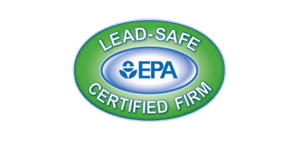Have you ever wondered whether your home’s ductwork is due for a cleaning? Are you curious about the signs that indicate dirty ducts and how it affects the air quality in your living space? Cleaning your ductwork is an important part of maintaining a healthy and efficient HVAC system, but knowing when to schedule this task can be challenging.
In this article, we will explore the key signs that indicate your ductwork needs cleaning, the impact of dirty ducts on air quality, and the steps you can take to prevent ductwork dirt accumulation. By the end, you’ll have a clear understanding of when to prioritize duct cleaning and how it contributes to maintaining a clean and comfortable home environment.
Indicators Your Air Ducts May Be Compromised
When it comes to maintaining a healthy and comfortable indoor environment, the condition of your air ducts plays a crucial role. Clogged air ducts and blocked vents can lead to a range of issues, from poor indoor air quality to reduced HVAC system efficiency. Knowing the signs of dirty ductwork can help you identify when it’s time for a thorough cleaning. Here are some indicators that your air ducts may be compromised:
- Visible dust and debris coming out of the vents: Clogged air ducts can release visible dust and debris into your home when your HVAC system is running. If you notice a puff of dust when the system starts, it’s a strong indication that your ducts are dirty. This debris can decrease indoor air quality and potentially trigger allergies or other respiratory issues.
- Clogged vents and inconsistent airflow: Blocked vents and clogged ducts can disrupt the airflow throughout your home. If you notice certain rooms or areas that are not receiving adequate airflow, it could be a sign of dirty ductwork. Inconsistent airflow can make certain areas uncomfortable and affect the overall heating and cooling efficiency of your HVAC system.
- Frequent air filter replacement: Dirty air filters can be indicative of dirty ducts. While air filters should be changed periodically, they shouldn’t become clogged and require replacement after just a few days. If you find yourself constantly needing to replace the air filters in your HVAC system, it’s likely that excessive dust and debris in the ductwork are causing frequent clogging of the filters.
- Duct odor or musty smell: Duct odor is another sign that your air ducts may need cleaning. If you notice a musty or foul smell in your home and can’t identify the source, it could be emanating from the air duct system. Get up close to the air registers and see if you can detect any odors. If the bad smell persists, it’s recommended to have a technician inspect the air ducts for any sources of odor.
Understanding these indicators can help you take proactive steps to address dirty ductwork and maintain a healthy and efficient HVAC system. If you observe any of these signs, it’s advisable to seek professional assistance for a thorough air duct cleaning. Keep in mind that regular maintenance, including air filter replacement and proper ventilation, can also help prevent the accumulation of dust and debris in your ductwork.
Common Contributors to Air Duct Contamination
Contaminants in air ducts can come from various sources in the surrounding environment. Understanding the common contributors to air duct contamination is essential in determining the factors causing duct contamination and sources of dirt in ductwork, enabling homeowners to take appropriate preventive measures.
One of the primary sources of dirt in ductwork is dust and debris from the surrounding environment. As air circulates through the HVAC system, it carries particles that settle in the ducts over time. These particles can come from outdoor pollutants, such as pollen and other allergens, as well as indoor debris like pet dander, fur, and lint from clothing and furniture.
In addition to dust and debris, mold and mildew growth can also contribute to air duct contamination. If moisture is present in the ductwork, it creates an ideal environment for mold and mildew to thrive. This can occur due to high humidity levels or water leaks within the system. The presence of mold and mildew not only impacts air quality but also poses health risks to occupants.
Insect droppings can also become sources of dirt in ductwork. Insects like spiders and cockroaches may find their way into the ducts and leave behind droppings, excrement, and residue that can contaminate the air flowing through the system.
Furthermore, vermin infestation, such as rodents, can significantly contribute to duct contamination. Rodents can enter the ductwork through small openings and leave behind droppings, hair, and debris, introducing potential health hazards and compromising air quality.
Lastly, construction or remodeling work can introduce dust and debris into the ductwork. The process of drilling, sanding, or demolishing can release particles that settle in the ventilation system, leading to contamination of the ducts.
By identifying these factors causing duct contamination and sources of dirt in ductwork, homeowners can take proactive measures to prevent or address these issues. Regular duct cleaning, proper maintenance, and addressing any underlying moisture or pest issues can help mitigate the risks associated with contaminated ductwork and maintain healthier indoor air quality.
Health and Environmental Concerns of Dirty Ductwork
Dirty ductwork can have significant health implications for individuals living in the home. It can exacerbate allergies, trigger asthma attacks, and cause respiratory problems. The presence of mold and mildew in the ducts can release spores into the air, further compromising indoor air quality. Contaminants in the ductwork can also lead to unpleasant odors and contribute to a generally uncomfortable living environment.
In addition to the impact on human health, dirty ductwork can also have environmental consequences. Dust and debris in the ducts can decrease the overall efficiency of your HVAC system, causing it to consume more energy and contribute to higher energy consumption. This increased energy usage has negative implications for the environment, including higher carbon emissions and resource depletion. Regular ductwork cleaning can help mitigate these environmental concerns.
Maintenance Tips to Prevent Ductwork Dirt Accumulation
Proper maintenance of your ductwork is essential for preserving good indoor air quality and preventing the accumulation of dirt and contaminants. By following these maintenance tips, you can ensure that your ducts remain clean and free from harmful pollutants.
Air filter maintenance: One of the most important maintenance tasks is regularly replacing your air filters. Clean air filters can effectively trap dust, debris, and other contaminants before they enter the ductwork. Refer to the manufacturer’s instructions for the recommended filter replacement intervals and make sure to adhere to them. This will help maintain the efficiency of your HVAC system and prevent the build-up of dirt in the ducts.
Proper ventilation: Ensuring proper ventilation is crucial for preventing the accumulation of dirt in your ductwork. Adequate airflow helps to minimize the settling of dust and debris. Make sure your home is well-ventilated, especially in areas prone to moisture build-up, such as bathrooms and kitchens. Consider using exhaust fans to remove excess humidity, which can contribute to mold and mildew growth in the ducts.
Humidity control: Controlling humidity levels in your home is another key aspect of ductwork maintenance. High levels of humidity can create a favorable environment for mold and mildew to thrive in the ducts. Invest in a home dehumidifier to help maintain optimal humidity levels. This will help prevent moisture-related issues and keep your ductwork clean and mold-free.
Preventing mold in ductwork: Mold growth in ductwork can lead to poor indoor air quality and pose health risks. In addition to maintaining proper ventilation and humidity control, regular duct cleaning can help prevent mold growth. Consider hiring a professional duct cleaning service to thoroughly clean and disinfect your ducts, removing any existing mold or mildew and preventing future growth.
By following these maintenance tips and implementing regular cleaning and maintenance practices, you can prevent the accumulation of dirt in your ductwork and ensure a healthier and cleaner indoor environment for you and your family.
Conclusion
Regular ductwork cleaning is essential to maintain optimal indoor air quality and ensure the efficient functioning of your HVAC system. By promptly addressing signs of dirty ducts, you can enhance the comfort and well-being of your home.
Implementing proper maintenance practices is equally important in preventing ductwork dirt accumulation. Regularly replacing air filters and ensuring proper ventilation are effective ways to minimize the build-up of dust and contaminants in your ducts.
However, it’s crucial to remember that professional expertise is irreplaceable when it comes to thorough duct inspection and cleaning. Consulting a reputable duct cleaning service will ensure the highest standards of cleanliness and performance for your ductwork.



